- Home
- Daphne Du Maurier
The Scapegoat
The Scapegoat Read online
ABOUT THE AUTHOR
Daphne du Maurier (1907-89) was born in London, the daughter of the famous actor-manager Sir Gerald du Maurier and granddaughter of George du Maurier, the author and artist. Educated at home with her sisters and later in Paris, she began writing short stories and articles in 1928, and in 1931 her first novel, The Loving Spirit, was published. But it was her novel Rebecca that made her one of the most popular authors of her day. Besides novels, du Maurier published short stories, plays and biographies. Many of her works were made into films, including Rebecca, Jamaica Inn, My Cousin Rachel, 'Don't Look Now' and 'The Birds'. She lived for most of her life in Cornwall, the setting for many of her books, and in 1969 was awarded a DBE.
ALSO BY DAPHNE DU MAURIER
FICTION
THE LOVING SPIRIT
I'LL NEVER BE YOUNG AGAIN
JULIUS
JAMAICA INN
FRENCHMAN'S CREEK
THE KING'S GENERAL
THE PARASITES
MY COUSIN RACHEL
THE BIRDS AND OTHER STORIES
MARY ANNE
THE SCAPEGOAT
CASTLE DOR
THE GLASS-BLOWERS
THE FLIGHT OF THE FALCON
THE HOUSE ON THE STRAND
RULE BRITANNIA
THE RENDEZVOUS AND OTHER STORIES
THE BREAKING POINT: SHORT STORIES
THE DOLL: SHORT STORIES
NON-FICTION
GERALD: A PORTRAIT
THE DU MAURIERS
THE INFERNAL WORLD OF BRANWELL BRONTE
GOLDEN LADS: A STUDY OF ANTHONY BACON, FRANCIS, AND THEIR FRIENDS
THE WINDING STAIR: FRANCIS BACON, HIS RISE AND FALL
MYSELF WHEN YOUNG
THE REBECCA NOTEBOOK AND OTHER MEMORIES
VANISHING CORNWALL
Copyright
Published by Hachette Digital ISBN: 978-1-405-51890-1
All characters and events in this publication, other than those clearly in the public domain, are fictitious and any resemblance to real persons, living or dead, is purely coincidental.
Copyright (c) The Estate of Daphne du Maurier 1957
Introduction copyright (c) Lisa Appignanesi 2004
All rights reserved. No part of this publication may be reproduced, stored in a retrieval system, or transmitted, in any form or by any means, without the prior permission in writing of the publisher.
Hachette Digital
Little, Brown Book Group
100 Victoria Embankment
London, EC4Y 0DY
www.hachette.co.uk
Contents
About the Author
Also by Daphne Du Maurier
Copyright
Introduction
Chapter 1
Chapter 2
Chapter 3
Chapter 4
Chapter 5
Chapter 6
Chapter 7
Chapter 8
Chapter 9
Chapter 10
Chapter 11
Chapter 12
Chapter 13
Chapter 14
Chapter 15
Chapter 16
Chapter 17
Chapter 18
Chapter 19
Chapter 20
Chapter 21
Chapter 22
Chapter 23
Chapter 24
Chapter 25
Chapter 26
Chapter 27
Introduction
The Scapegoat, Daphne du Maurier's eleventh novel, first appeared in 1957. Almost twenty years earlier, Rebecca had rocketed to bestsellerdom and made the du Maurier name synonymous with romance. It is this expectation of intrigue and high passion which makes the later novel so startling. The Scapegoat is more Graham Greene than romance. It has a terse economy of style, great literary sophistication and an alienated post-war male conscience at its core. It also has gripping narrative pace. What is perhaps surprising is that all these are put at the service of a complex of themes already present in Rebecca. What is more surprising is that this fine book has so far failed to find the wide acclaim of its predecessor.
If in one light Rebecca is the story of the second and nameless Mrs de Winter's wistful longing to be like the dramatic and unforgettable wife she has never quite managed to replace - that Rebecca who left a mark on all who knew her - then The Scapegoat is the story of her male counterpart, John.
Plain, English John, like the second Mrs de Winter is nameless, but in reverse: he has no family name, no patronymic, as the Russians would say, no identifying male line which is the sign of belonging as well as the sign of power. Diffident, family-less, orphaned John is a lacklustre historian of France. At the start of the book, he is on his way back to a London he would rather not reach and considers stopping off at a Trappist Monastery for succour. He is depressed, indeed suicidal. He doesn't 'know what to do with failure' and wishes, like the second Mrs de Winter, he were other. To use E. M. Forster's term, he wants to 'connect': somehow to form relations, perhaps to love, certainly to take part in that French life he can only observe from the outside and record.
With the perversity and panache of an Edgar Allan Poe or a Dostoevsky, du Maurier quickly gives her hero what he wants. She gives him another life. She gives it to him through a double. To want otherness enough is somehow to become other. But as fairytales always knew and we post-Freudians iterate, the fulfilment of a deeply held wish may well be the most dangerous thing that can happen to you.
John's double arrives on the scene without magic Jekyll and Hyde potions or devilishly dreamy lightning and thunderclaps or even deep rumblings of Russian anguish. He simply materializes beside the hero at a crowded station buffet in Le Mans and makes him feel slightly 'sick' at the 'looking at himself'. Du Maurier's understated matter-of-factness, her edge of humour, is what gives the scene such force and plausibility, together with an undertow of threat. 'You don't happen to be the devil, by any chance?' Jean de Gue asks John who answers, 'I might ask you the same question.'
The two men drink and dine together, stare and drink some more. What John learns is that his mirror image is both altogether familiar and profoundly unfamiliar. The Comte de Gue - and it is the one thing he reveals in response to John's garrulous self-confession - suffers from what John desires: 'too many possessions. Human ones.' In the presence of this bold and domineering twin, burdened with relations, the hero feels insubstantial, like a shadow without a will. When this shadow wakes from drunken stupour, it is to find itself substantiated, made over, as the Comte de Gue.
What du Maurier does brilliantly is to show us that identity (mistaken or not) is largely based on what others want and expect of us, what they project onto us. Hell may be other people, but so is life. It is no use John telling the chauffeur who has come to fetch him that he is not the Count: the man just respectfully asks if Monsieur would like to rest a little longer or have something brought from the pharmacie. Nor is there any point his protesting when he reaches the moated chateau which is the home of his double. Whatever conflicts he may experience inwardly, whatever his trepidation at each step of the unknown way, he behaves largely as the family demand of him and is accepted, even when he surprises, with equal measures of love and loathing.
John's journey as another into the depths of the extended family which is his new world is deeply disturbing in the echoes it sets up in us. Each step in his discovery of the familiar increases the threat that he will be uncovered as an impostor, neither husband nor father, son nor lover, nor indeed any of the other shifting, unstable and demanding parts in the great generational oedipal drama. John masquerading as Jean is du Maurier's means of tapping the deep reservoirs of the uncanny which flow through the family: on occasion any of us may wake
to find our nearest unknown, unfamiliar, frightening, wondering who they or we are.
The domestic, as du Maurier knew too well from her own childhood and marriage, is haunted terrain whether it's a two up, two down in Balham, Manderley or a French chateau with gothic turrets and paintings of bloodied martyrs, here described with a spareness usually applied to the first. Dark murderous secrets, shafts of prohibited desire, make their home in each, turning the safe into the hazardous with the merest flick of a table knife or bedroom light.
John's gradual discovery of who the main players are in the chateau and its accompanying glass works, not to mention the secrets which drive them, is a process punctuated by the dangers both of repulsion and attachment. Du Maurier draws her characters with the deft strokes of a master, showing them as at once monstrous and ordinary. Through them, she has John wake to feeling. Here is John meeting the ailing bulk of sagging and demanding flesh who is his mother:
'Drawn to her like a magnet, I went instinctively to kneel beside her chair, and was at once caught and smothered, lost in the mountain of flesh and woollen wraps, feeling momentarily like a fly trapped in a great spider's web, yet at the same time fascinated because of the likeness, another facet of the self, but elderly, female, and grotesque.'
John is also this controlling, repellent woman who needs the love and power the Count won't give her and displaces need into an addiction her newly awakening son may help to cure.
The Scapegoat has a memorable cast of characters: the resentful younger brother, the sister whose religious ardours are a veil for rage and repressed desires, the frail, depressed, jealous wife trapped in the emotional maelstrom of her husband's kin, two mistresses, one histrionic and demanding, one a still centre, not to mention a sweetly unflappable cure de campagne, workers and retainers. Amongst all these vivid creations, it is Monsieur le Comte's daughter who leaps out at us with a mixture of poignant force and Puck-ish mischief. At the cusp of puberty, Marie-Noel is neither male nor female, but somehow both, undoubtedly her maker's preferred state. She is caught between her aunt's blandishments towards a saintly, self-flagellating life, for which she shows a marked talent, and her love for her all-too-worldly father whom she openly wants all for herself. Like a child, Marie-Noel speaks the household's secret truths. Like the dawning woman she also is, she is poised to love and control or throw herself to her end. Like her creator, she knows the tugs of father-love almost too well, and can also 'dream true' - somehow make her father into a good man and her own. Marie-Noel is prescient and her wishes dream the future too acutely.
If all this put blandly has the ring of melodrama or the novel of sensation, it is to du Maurier's credit that she grounds the whole not only in a psychological realism, but in a knowledge of France which came to her with the ancestral line. The du Mauriers had once had a verrerie, a glass works, and indeed, it was while she was on a trip to France to find out more about her forebears, that the seeds of The Scapegoat were sewn. One of the secrets the novel probes has to do with sides taken during the occupation in the Second World War, of who collaborated and who resisted and whether absolute moral values can be read from those allegiances. In du Maurier's world, good and evil are never quite that clearly demarcated. Seemingly good political acts can mask evil personal passions. Both percolate through the generations and distort lives.
But what of the scapegoat, thrust from the fold in order to take on its sins? Du Maurier gives us at least two contenders for the role. At the end, English John is forced out of the field of his new connectedness, having left everyone in a far better state than he found them. Is he to be pitied as our scapegoat? Or does the role really belong, as so often in du Maurier's work, to the pregnant, benighted wife who falls to her sacrificial death, leaving her husband the wherewithal to make his mother and daughter and the rest of the family far happier (which in the women's case, also means busier) than such a calamity should allow?
Conventional morality was never something du Maurier succumbed to. She was always a quintessential doubler, like some of the characters her beloved father played. In the shifting landscapes of life, good and bad, like wife and mistress, or male and female, can play out surprising metamorphoses. At the end of The Scapegoat, when John goes to see Bela the mistress who could be seen as the moral centre of the book - the independent and loving mistress who admits to having recognized him, and who has repaired the animal figurines, broken by Marie-Noel, which stand in for maternal love - it is clear that she doesn't judge his double, the Count, as harshly as he does. Jean de Gue may callously think that all relations are in the last instance based on greed, but there is only a fine line between his cynicism and John's newly acquired tenderness. It may be an important line and in John's case, it is the line of self-recognition, but at any moment, it can slide into its opposite. After all, both John and Jean have contemplated murder.
In a letter written the year of the publication of The Scapegoat, du Maurier notes of herself and her husband, 'We are both doubles. So is everyone. Every one of us has his or her dark side. Which is to overcome the other?'
In du Maurier's case, there are not only dark doubles, but sexual doubles too, male vying with female in role and desire. She always talked of the 'boy-in-the-box' she contained inside herself, a boy who loved women, while she also loved men.
But perhaps the idea of the double, which has so preoccupied artists, is the ultimate image for the writer herself. Du Maurier's marriage was in difficulty at the time she wrote The Scapegoat, and it would hardly be surprising if she felt the always uneasy split between loving, engaged wife and coolly observant, disengaged writer as more than usually troubling.
As Margaret Atwood has noted: 'There has been a widespread suspicion among writers ... that there are two of him sharing the same body, with a hard-to-predict and difficult-to-pinpoint moment during which one turns into the other. When writers have spoken consciously of their own double natures, they're likely to say that one half does the living, the other half the writing, and ... that each is parasitic upon the other.... The double may be shadowy, but it is also indispensable.'*
For du Maurier, throughout her life, doubling was indispensable. The force of her understanding of what it meant is perhaps what gives The Scapegoat, a mature novel, its power.
Neither part of me could put it down.
Lisa Appignanesi, 2003
1
I left the car by the side of the cathedral, and then walked down the steps into the Place des Jacobins. It was still raining hard. It had not once let up since Tours, and all I had seen of the countryside I loved was the gleaming surface of the route nationale, rhythmically cut by the monotonous swing of the windscreen-wiper.
Outside Le Mans, the depression that had grown upon me during the past twenty-four hours had intensified. It was inevitable, always, during the last days of holiday; but this time, more than ever before, I was aware of time having passed too swiftly, not because the days had been over full but because I had achieved nothing. The notes I had written for the lectures I was to give during the coming autumn were scholarly, precise, with dates and facts that I should afterwards dress up in language designed to strike a spark in the dull minds of inattentive students. But even if I held their flagging interest for a brief half hour, I should know, when I had finished, that nothing I had said to them was of any value, that I had only given them images of history brightly coloured - waxwork models, puppet figures strutting through a charade. The real meaning of history would have escaped me, because I had never been close enough to people.
It was all too easy to lose oneself in a past half real, half imaginary, and so be blind to the present. In the cities that I knew best, Tours, Blois, Orleans, I lost myself in fantasy, seeing other walls, older streets, the crumbling corners of once glittering facades, and they were more live to me than any real structure before my eyes, for in their shadows lay security; but in the hard light of reality there was only doubt and apprehension.
In Blois, in the c
hateau, feeling the smoke-blackened walls with my hands, a thousand people might ache and suffer a few hundred yards away but I saw none of them. For there beside me would be Henri III, perfumed and bejewelled, touching my shoulder with a velvet glove, a lapdog in the crook of his arm as though he nursed a child; and the false charm of his crafty feminine face was plainer to me than the mask of the gaping tourist at my side, fumbling for a sweet in a paper-bag, while I waited for a footstep, for a cry, and for the Duc de Guise to die. In Orleans I rode beside the Maid, or, like the Bastard, held her stirrup when she mounted, hearing as he did the clamour and the shouting and the deep peal of the bells. Or I might even kneel with her in prayer, awaiting the Voices that sometimes hovered within the fringe of my experience but never came. And I would stumble from the cathedral, watching my half-boy with her pure, fanatic's eyes, close to her unseen world, and then be jolted out of time into the present, where she was nothing but a statue, and I an indifferent historian, and the France she had died to save a country filled with living men and women whom I had never even tried to understand.
As I drove out of Tours, on the last morning, my dissatisfaction with the lectures I should give in London, and my realization that all I had ever done in life, not only in France but in England also, was to watch people, never to partake in their happiness or pain, brought such a sense of overwhelming depression, deepened by the rain stinging the windows of the car, that, when I came to Le Mans, although I had not intended to stop there and lunch, I changed my mind, hoping to change my mood.
It was market day, and in the Place des Jacobins lorries and carts with green tarpaulins stood parked close to the steps below the cathedral, and the rows of stalls were crowded one beside another. It must have been one of the big market days, for the Place was full of country people, and there was an unmistakable smell in the air, half vegetable, half beast, that could come only from the soil, muddied, ruddy-brown and wet, and from the steaming pens where huddled cattle moved in uneasy comradeship. Three men were prodding a bullock towards the lorry beside me. The poor brute bellowed, turning his roped head from side to side, backing away from the lorry, which was already packed with his snorting, frightened fellows. I could see the red flecks in his bewildered eyes as one of the men pricked his flanks with a hay-fork.

 Jamaica Inn
Jamaica Inn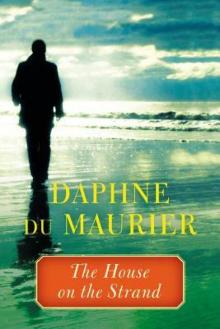 The House on the Strand
The House on the Strand I'll Never Be Young Again
I'll Never Be Young Again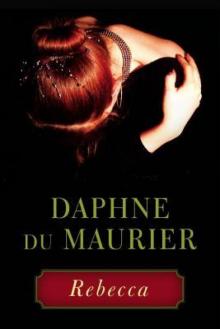 Rebecca
Rebecca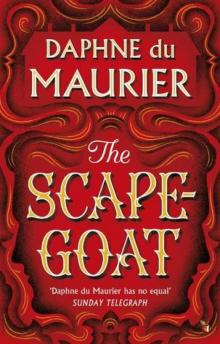 The Scapegoat
The Scapegoat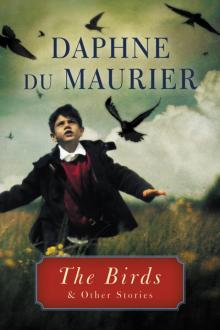 The Birds and Other Stories
The Birds and Other Stories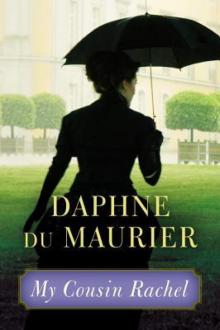 My Cousin Rachel
My Cousin Rachel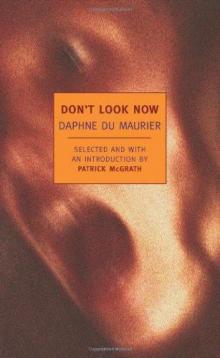 Don't Look Now
Don't Look Now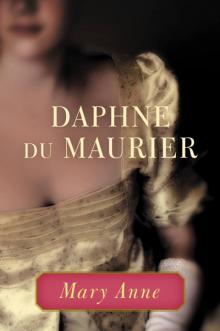 Mary Anne
Mary Anne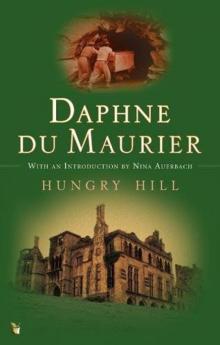 Hungry Hill
Hungry Hill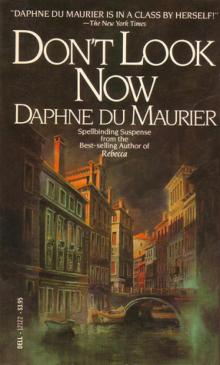 Don't Look Now and Other Stories
Don't Look Now and Other Stories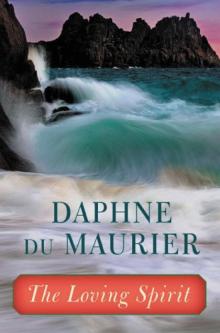 The Loving Spirit
The Loving Spirit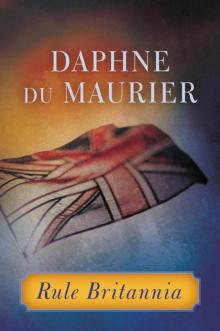 Rule Britannia
Rule Britannia The King's General
The King's General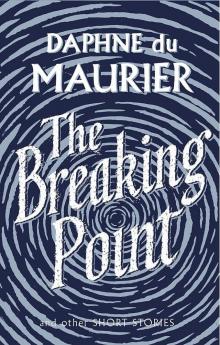 The Breaking Point: Short Stories
The Breaking Point: Short Stories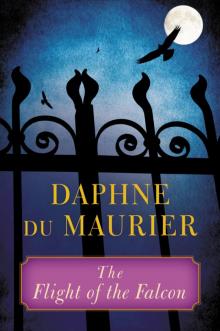 The Flight of the Falcon
The Flight of the Falcon The Apple Tree: a short novel & several long stories
The Apple Tree: a short novel & several long stories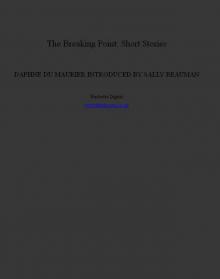 The Breaking Point
The Breaking Point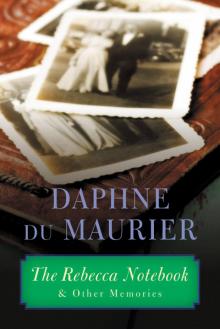 The Rebecca Notebook
The Rebecca Notebook The Winding Stair: Francis Bacon, His Rise and Fall
The Winding Stair: Francis Bacon, His Rise and Fall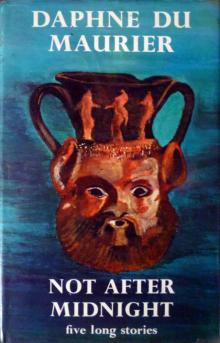 Not After Midnight & Other Stories
Not After Midnight & Other Stories The Doll
The Doll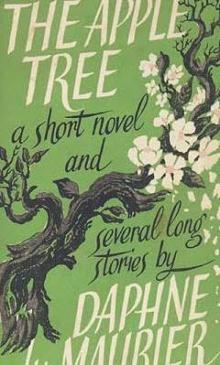 The Apple Tree
The Apple Tree